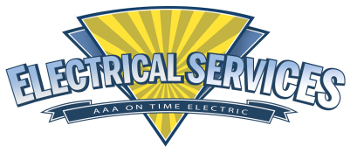
786-487-7441
Commercial / Residential Electrical Services
LICENSE # 13002896

786-487-7441
Commercial / Residential Electrical Services
LICENSE # 13002896
If you have ever experienced an extended power outage you already know how frustrating and inconvenient it can be. Well, it can be pretty costly too (when all the food in your refrigerator spoils). So, you have decided it’s time to learn more about a whole house generator, but you’re wondering, “what size generator do I need for my house?”
When it comes to determining the right size generator for your home, it doesn’t mean how much room it takes up in your yard—it means the total wattage required to run your entire home. Determining your specific wattage size requires a bit of math. Don’t panic though! We’ve done most of the homework for you.
Generator sizes are determined by the average wattage use. So, to estimate the appropriate size generator for a home, there are a few ways this can be calculated depending on your needs. You can use the total square footage of your home, your monthly electric usage or breaker size, or you can total up the amount of wattage used by all of your household appliances to determine your wattage requirements.
Keep in mind that having too small or too large of a generator can cause issues. Choosing a size that is too small can ruin your appliances—which defeats the purpose of installing a generator in the first place. Installing a generator that is too big is less efficient and will cost you more to run. It’s best to choose a size that meets your needs now, but has the potential to meet additional power demands later on.

Every home is unique when it comes to its specific day-to-day wattage use. When deciding your specific generator size, you need to determine what essentials in your home need to be powered during an outage. Some of those essentials might include: your furnace, A/C, water pump, refrigerator, stove, lighting, office essential, etc. Averaging out the total wattage use of these appliances will give you an estimate on the generator size you need. The wattage use chart below will give you an idea of what size generator you need to power specific appliances.
Use the chart below to estimate your home’s kilowatt requirements. Add up the wattage of each device in your home; for the most accurate results, check the label or owner’s manual for large appliances and electronics to determine the exact wattage. Once you have the total, divide the sum by 1,000 to calculate the kilowatts you need from your new generator.
|
Electronics & Appliances |
Wattage |
|
Central Air Conditioner |
1700-8750 |
|
Electric Furnace |
18,000 |
|
Gas Furnace |
600 |
|
Electric Baseboard Heaters |
225 watts per foot (by heater length) |
|
Electric Heat Pump |
Up to 15,000 |
|
Water Pump |
500-1050 |
|
Electric Water Heater |
4500 |
|
Gas Water Heater |
500 running/1500 starting |
|
Lighting |
500 |
|
Garage Door Opener |
550-725 |
|
Computer |
200 |
|
Television |
300 |
|
Dishwasher |
700 |
|
Refrigerator |
600 |
|
Gas Dryer |
700 |
|
Electric Dryer |
5750 |
|
Washing Machine |
750 |
|
Microwave |
1000 |
|
Standalone Freezer |
2500 |
|
Electric Oven |
2500-5000 |
For many people reliable power is not just a convenience, it’s a necessity. Having a standby generator to keep your home appliances, office and electronics running consistently will provide relief next time the grid goes down. If you have questions, or want more information on how to keep your home up and running when the power goes out, contact the pros at Electrical Services FL. We have the knowledge and experience to help you choose the right generator size for your home, and ensure it’s properly installed. Call Electrical Services FL today to schedule an appointment.